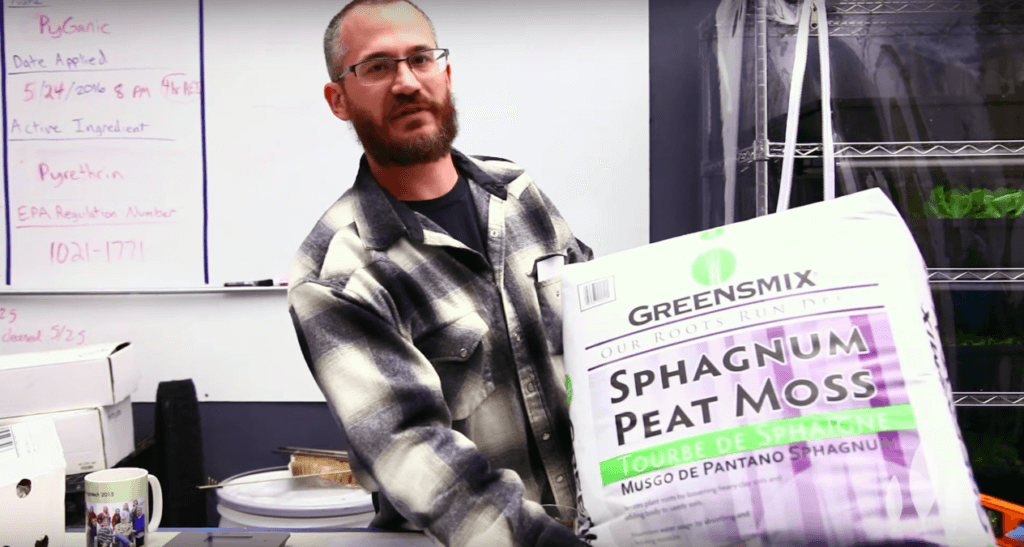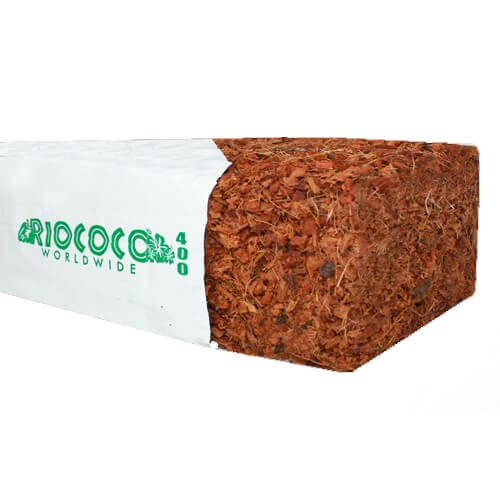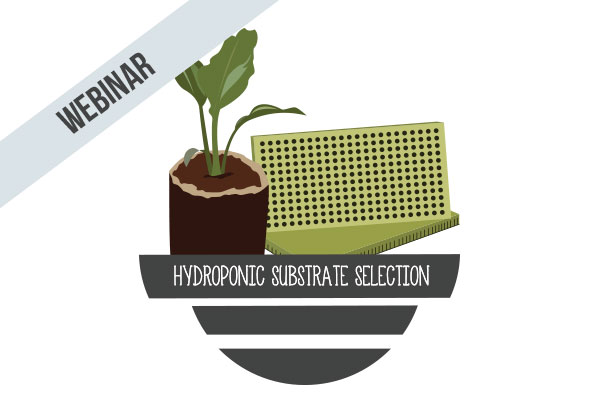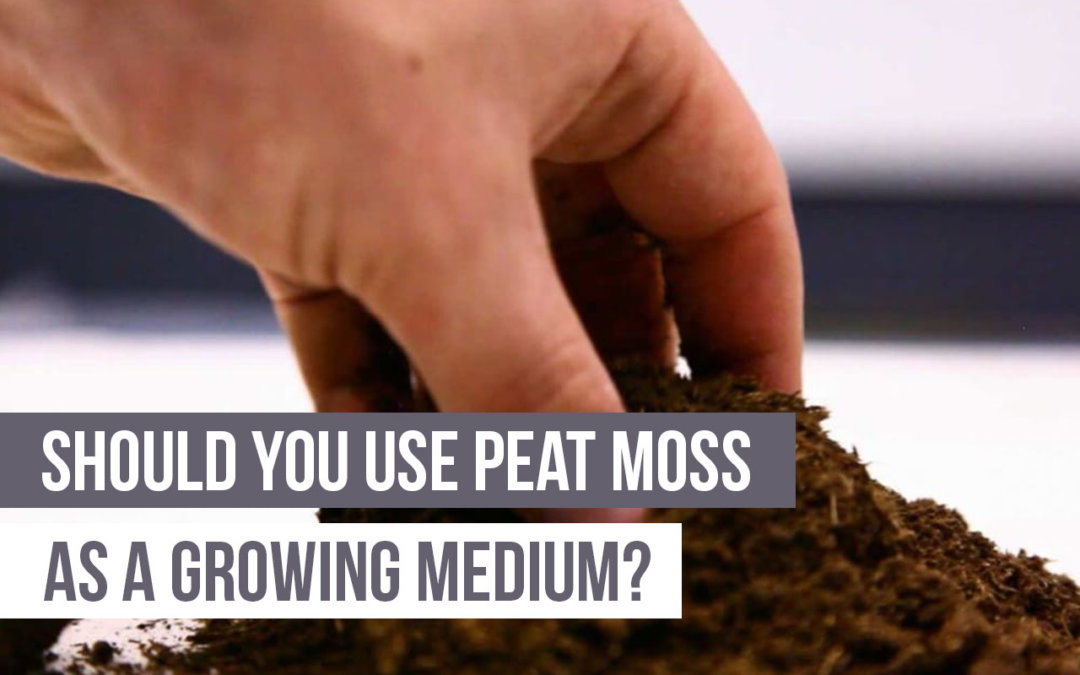What is Peat Moss?
Peat moss, or sphagnum moss, is accumulated bio-matter that develops over time in peat bogs. Most peat is harvested in Finland, Ireland, Sweden, Germany or Canada.
The mosses grow, fall to the bottom of the bog, and form layers. At the bottom, the moss only decomposes partially, because the conditions are anaerobic.
Eventually, someone comes along and drains the bog to gather the peat moss. After it’s processed into bricks and packaged, it’s shipped off for a variety of uses, though agriculture is by far the largest user of peat.

Peat moss as a growing medium
Peat moss is often used for seedling starting, in potting mixes, and even as a primary hydroponic or aquaponic media. Hobby growers and commercial growers both use peat for its great water holding capacity, a slight acidity that makes pH adjustments easier, and the low cost (about $40 per cubic yard).
Peat is not appropriate for all hydroponic systems, however. Once it starts to decompose, it compresses around the roots, which are choked out in the anaerobic root zone.
You can balance this effect to some degree by adding more structure to the medium. It’s a good idea to mix peat moss with something else—perlite (not for aquaponics, though!), or even coco coir. This aerates the mix and helps avoid compression.
VIDEO: Using Peat Moss as Your Medium
Peat moss: renewable in geologic time, but not human time.
Because peat moss is renewable in geologic time, people assume that it’s a renewable resource for human use. It’s not! Peat is used at much higher rates than it forms (which is at about .5–1 mm per year)—in other words, it’s renewable in geologic time, but not in human time.
The US Geologic Survey reports that “the volume of global peatlands has been decreasing at a rate of 0.05% annually.” There are many other reasons to conserve peat moss as well, the first and foremost being the massive habitat reduction that results from peat moss harvesting.
If you decide that you’d rather use a more environmentally friendly option on your farm, there are several alternatives.
More environmentally kind alternatives
Finding an alternative to suit your needs depends on what benefit of peat you wish to replace. You may simply need a media to house your plant roots. You may be looking for something that will hold water while irrigation cycles are paused. There is an alternative available for any purpose.
The best alternative: Coco Coir
Coco coir is a similar media made from cast-off coconut husks, a byproduct of the coconut industry. It has begun to replace peat moss in many settings.
Coco coir is less acidic than peat moss and can be slightly alkaline. It’s also courser (so it doesn’t have the same compression issues), and it’s more renewable than peat.
Other alternatives, from wood pulp products to compost can increase water holding and structure of the media.
Need help choosing a media?
For growers simply exploring media options, hydroton, perlite, vermiculite, and many others exist, each with their own pros and cons. For help comparing these media types, check out o ur Choosing a Substrate course.
ur Choosing a Substrate course.
This course covers…
- Which Medium is Right for You?
- Plugs, Media, and other substrates.
Not an Upstart University member?
For $9.99 a month, start your farm training. If you’ve dreamed of starting a small farm, Upstart U will get you started and on the path to accomplishing that dream!
For more information on peat, visit:



Trackbacks/Pingbacks